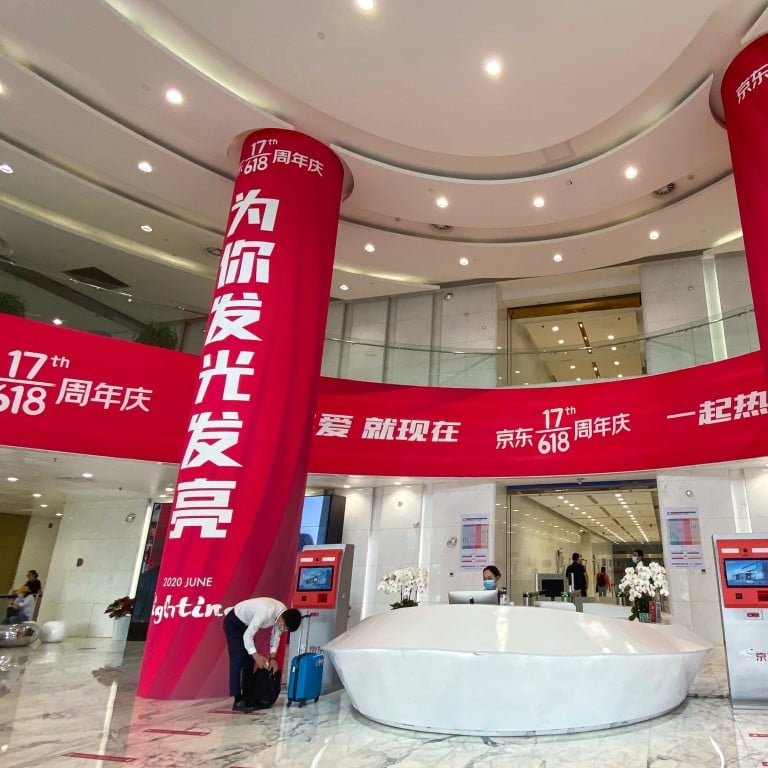
Thanks to live-streaming craze, China’s midyear shopping festival has moved beyond e-commerce
- China has become an influencer economy with almost all online consumers buying products based on recommendations by their idols
- For more than 10 years the midyear shopping festival has been a sales boost for e-commerce players like JD.com, Pinduoduo and Alibaba
Beijing resident Maggie Li had never taken part in China’s midyear 618 online shopping festival until her favourite live-streaming anchor Li Jiaqi – the country’s top beauty product influencer – appeared on the shopping extravaganza.
The 38-year-old Li admits she is a live-stream shopping maniac, having spent over 13,000 yuan (US$1,833) on products that her idols endorsed during the shopping event, which kicked off on June 1 and runs till Thursday. The shopping gala, named for the date JD.com first launched online sales – June 18, 2004 – works in a similar fashion to the Singles’ Day shopping festival run by its rival Alibaba Group.
For more than 10 years, the midyear shopping festival has been a sales boost for e-commerce players like JD.com, Pinduoduo and Alibaba, owner of the South China Morning Post. As more fans like Li spend big – making their streaming idols rich in the process – it has become apparent that the country’s traditional online shopping business is no longer just for e-commerce players.
Similar to conventional luxury and beauty brand ambassadors, the live streamers endorse products and services on the platforms, converting their millions of online fans into potential customers, especially during festivals like 618.
China’s retail economy has become influencer-driven, with almost all online consumers buying products based on recommendations by their idols. That trend has enabled live streaming and video platforms like Kuaishou and Douyin, which have cultivated a roster of hugely popular influencers, to participate in the e-commerce market through partnerships with the online sales platforms.
The birthplace of WeChat now wants to become China’s live streaming capital
At the end of May, JD.com partnered with Tencent-backed Kuaishou to boost its presence in live streaming. Under the partnership, consumers were able to make purchases directly from the live streaming platform without being redirected back to JD.com, which provided the delivery and after-sales service for the customers. Kuaishou’s 300 million daily active users were expected to give the e-commerce specialist a strong boost during the shopping spree.
“The competition in the mobile internet industry is multidimensional, and the competition for users is very intense,” said Ma Shicong, senior analyst at research firm Analysys. “It’s inevitable that a platform needs to develop in more than one direction. Short video platforms need a comprehensive strategy instead of standing still on their own territory.”

04:20
How Chinese e-commerce giant JD.com is keeping employees safe during Covid-19 pandemic
Adding to the already crowded mid year shopping field and separate from its JD.com partnership, early this month Kuaishou announced its own online shopping event that runs until Thursday.
“Short video platforms like Kuaishou will not be satisfied to become only a channel for directing traffic to other e-commerce platforms, they want to develop their own e-commerce systems to diversify revenue sources,” added Ma.
However, analysts say it will be difficult for video platforms to become serious challengers in the market because they do not have the advanced supply chains or after-sales service infrastructure developed over many years by the e-commerce giants.
Without experienced partners, “who can solve the problem if there are fake products?” said Chenkai Ling, vice-president of JD.com and head of strategy for JD Retail. “We are targeting to make our supply chain available to more platforms including Douyin, Kuaishou, Bilibili and even [Alibaba’s] Taobao.”
Virtual anime idols join China’s live streaming e-commerce craze
That said, the e-commerce players are also muscling into the territory of the live streaming platforms. To promote the first major online shopping event since the end of the country’s coronavirus lockdown measures, JD.com is hosting more than 300,000 live streaming sessions during the gala.
JD said it has invited an army of key opinion leaders (KOLs) – people with expert knowledge or influence in particular fields – to participate in live streaming e-commerce sessions during the festival.
More than 300 celebrities and 600 brand executives were expected to join live-streaming sessions on Alibaba’s Taobao Live, while over 10,000 physical retail stores will live-stream to promote their products.

E-commerce players are strengthening live streaming features on their platforms to take advantage of the new marketing tool which has been widely adopted by traditional merchants as a way to recover from the impact of the coronavirus pandemic.
Transactions generated through Taobao Live reached 5.1 billion yuan on the first day of the 618 shopping event on June 1, with more than 1,000 brands, merchants and livestreamers generating at least 10 million yuan each.
Can live streaming help China’s bookstores survive the pandemic?
“Consumers, brands and influencers are all riding the buzz, creating more entertaining content and offering ever-better deals,” said Mark Tanner, managing director at the Shanghai consultancy China Skinny. “As more brands promote live streaming, there are more reasons for consumers to watch live-streams which have continued to drive growth.”
JD will increase its investment in live-streaming, including building multichannel networks as well as supporting live-streamers and product providers, according to Ling. “We hope merchants on our platform can do live-streaming e-commerce by themselves,” said Ling.
“Consumers become loyal to the brands if they like the products themselves rather than the influencers because influencers can endorse different brands.”


